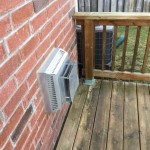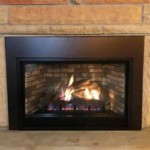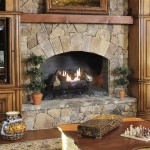Replacing a Wood Burning Stove with a Gas Fireplace: A Comprehensive Guide
The decision to replace a wood-burning stove with a gas fireplace involves various considerations, ranging from environmental impact and convenience to cost and aesthetic appeal. Both heating options offer distinct advantages and disadvantages for homeowners. A thorough understanding of these factors is essential for making an informed choice that aligns with individual needs and preferences.
Wood-burning stoves, historically a primary source of heat, provide a rustic charm and the undeniable appeal of a real wood fire. However, they require manual fuel loading, regular cleaning, and adherence to local regulations regarding emissions. Gas fireplaces, on the other hand, offer the convenience of instant ignition, adjustable heat output, and reduced maintenance requirements. The transition from wood to gas necessitates careful planning and adherence to safety standards.
The Environmental Impact: A Comparative Analysis
One of the most significant considerations when choosing between a wood-burning stove and a gas fireplace is their respective environmental impact. Wood-burning stoves, while utilizing a renewable resource, can contribute to air pollution through the release of particulate matter, carbon monoxide, and other harmful emissions. The efficiency of wood-burning stoves varies widely, with older models often producing significantly more pollutants than newer, EPA-certified stoves designed to burn cleaner.
Gas fireplaces, typically fueled by natural gas or propane, generally produce fewer particulate emissions compared to wood-burning stoves. However, the combustion of natural gas releases carbon dioxide, a greenhouse gas that contributes to climate change. The overall environmental footprint of a gas fireplace depends on factors such as the efficiency of the unit, the source of the gas, and the frequency of use. Advancements in gas fireplace technology, such as direct-vent systems and sealed combustion chambers, have improved efficiency and reduced emissions, making them a more environmentally responsible option compared to older, less efficient models.
Furthermore, the sourcing and processing of wood for wood-burning stoves can have environmental consequences, including deforestation, habitat destruction, and transportation emissions. Sustainable forestry practices can mitigate some of these impacts, but it's crucial to ensure that wood is sourced responsibly. Choosing a gas fireplace powered by renewable natural gas or propane derived from sustainable sources can further minimize its environmental footprint.
Cost Considerations: Initial Investment and Long-Term Expenses
The financial implications of replacing a wood-burning stove with a gas fireplace extend beyond the initial purchase and installation costs. Wood-burning stoves typically have a lower upfront cost than gas fireplaces, particularly if the homeowner already has a chimney and access to a readily available wood supply. However, the long-term expenses associated with wood-burning stoves can quickly add up. These include the cost of purchasing or harvesting wood, the expense of chimney cleaning and maintenance, and the potential for increased insurance premiums due to the fire risk associated with wood-burning appliances.
Gas fireplaces, while requiring a higher initial investment for the unit and installation, offer predictable and often lower long-term operating costs. Natural gas prices are generally stable and competitive compared to the fluctuating price of firewood. The cost of propane can be higher than natural gas, but propane-fueled fireplaces offer independence from the natural gas grid, making them suitable for homes in areas without natural gas access. The maintenance requirements for gas fireplaces are generally lower than those for wood-burning stoves, with annual inspections and occasional cleaning typically sufficient to ensure safe and efficient operation.
The cost of installation for a gas fireplace can vary depending on factors such as the existing chimney infrastructure, the need for gas line installation or propane tank placement, and the complexity of the venting system. Direct-vent gas fireplaces, which vent directly through an exterior wall, can be easier and less expensive to install than models that require a traditional chimney. It is advisable to obtain quotes from multiple qualified contractors to compare pricing and ensure that the installation is performed safely and in accordance with local building codes.
Convenience and Maintenance: A Comparison of Operational Factors
The ease of use and maintenance requirements are significant factors to consider when transitioning from a wood-burning stove to a gas fireplace. Wood-burning stoves require manual labor for loading wood, tending the fire, and removing ashes. Lighting a wood fire can be challenging, especially in cold or damp conditions. Controlling the heat output of a wood-burning stove requires experience and can be difficult to maintain a consistent temperature.
Gas fireplaces offer unparalleled convenience with their push-button ignition and adjustable heat settings. Many gas fireplaces feature remote controls or programmable thermostats, allowing homeowners to easily adjust the temperature and set schedules for automatic operation. The absence of wood handling and ash disposal eliminates much of the mess and labor associated with wood-burning stoves.
Maintenance for gas fireplaces typically involves annual inspections by a qualified technician to ensure proper venting, burner function, and safety system operation. Regular cleaning of the glass enclosure can help maintain the visual appeal of the fireplace. While gas fireplaces require less frequent cleaning than wood-burning stoves, proper maintenance is essential to ensure safe and efficient operation and to prevent potential hazards such as gas leaks or carbon monoxide poisoning.
The decision to replace a wood burning stove with a gas fireplace is a personal one, dependent on individual priorities and circumstances. Careful consideration of environmental impact, cost, and convenience will facilitate a well-informed choice that aligns with the homeowner's lifestyle and preferences.

Convert From Wood To Gas With A Insert The Kernel Burner

What To Consider When Replacing Your Wood Fireplace With A Gas One

Can A Wood Burning Fireplace Be Converted To Gas The Flame Company

Should You Change Or Convert Your Wood Fireplace

Replacing A Wood Burning Stove With Gas

Fireplaces Inserts Wood Gas Fireplace Xtrordinair

How To Convert Your Wood Burning Fireplace Electric Or Gas

Convert To Gas Installing Fireplace Inserts Doctor Flue

Fireplace Insert Guide Fireplaces Direct Learning Center

Gas Logs Vs Wood Burning Fireplaces Dc Area Fireplace Service








